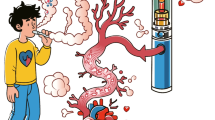Abstract
Objective
To investigate the association between polymorphisms in the human CYP2A6 gene, CYP2A6 enzyme activity and the influence of cigarette smoking in a Thai population.
Methods
Coumarin (5 mg capsule) was administered to 194 healthy Thai subjects. Genetic variation of the CYP2A6 gene was identified using PCR methods. The excreted dose of 7-hydroxycoumarin (as a percentage of the urine concentration) 2 h after administration was calculated as an index of coumarin metabolism.
Results
The frequencies of CYP2A6 alleles *1A, *1B, *4C, *7, *8, *9 and *10 were 34.0, 35.3, 9.3, 6.4, 0.5, 12.1 and 2.4%, respectively. Of the 194 subjects tested, the number (percentages) of Thai participants classified as ultra-rapid, extensive, intermediate and poor metabolizers were 8 (4.1%), 159 (82.0%) 22 (11.3%) and five (2.6%), respectively.
Conclusion
A relationship between the interindividual differences in coumarin metabolism and genetic polymorphisms of the CYP2A6 gene was observed.


Similar content being viewed by others
References
Kitagawa K, Kunugita N, Katoh T, Yang M, Kawamoto T (1999) The significance of the homozygous CYP2A6 deletion on nicotine metabolism: a new genotyping method of CYP2A6 using a single PCR-RFLP. Biochem Biophys Res Commun 262:146–151
Nakajima M, Yamagishi SI, Yamamoto H et al (2000) Deficient cotinine formation from nicotine is attributed to the whole deletion of the CYP2A6 gene in humans. Clin Pharmacol Ther 67:57–69
Pianezza ML, Sellers EM, Tyndale RF (1998) Nicotine metabolism defect reduces smoking. Nature 393:750
Oscarson M, McLellan RA, Gullsten H et al (1999) Characterization and PCR-based detection of a CYP2A6 gene deletion found at a high frequency in a Chinese population. FEBS Lett 448:105–110
Kwon J, Nakajima M, Chai S et al (2001) Nicotine metabolism and CYP2A6 allele frequencies in Koreans. Pharmacogenetics 11:317–323
Nakajima M, Kwon JT, Tanaka N (2001) Relationship between interindividual differences in nicotine metabolism and CYP2A6 genetic polymorphism in humans. Clin Pharmacol Ther 69:72–78
Yoshida R, Nakajima M, Watanabe Y, Kwon JT, Yokoi T (2002) Genetic polymorphisms in human CYP2A6 gene causing impaired nicotine metabolism. Br J Clin Pharmacol 54:511–517
Ujjin P, Satarug S, Vanavanitkun Y et al (2002) Variation in coumarin 7-hydroxylase activity associated with genetic polymorphism of cytochrome P450 2A6 and the body status of iron stores in adult Thai males and females. Pharmacogenetics 12:241–249
Peamkrasatam S, Sriwatanakul K, Kiyotani K, Fujieda M, Yamazaki H, Kamataki T, Yoovathaworn K (2006) In vivo evaluation of coumarin and nicotine as probe drugs to predict the metabolic capacity of CYP2A6 due to genetic polymorphism in Thais. Drug Met Pharmacokinet 21:475–484
Ausubel FM, Brent R, Kingston RE, Moore DM, Smith JA, Struhl K (eds) (1989) Current protocols in molecular biology, Greene Publishing Assoc/Wiley-Interscience, New York/New York Chichester
Ariyoshi N, Sawamura Y, Kamataki T (2001) A novel single nucleotide polymorphism altering stability and activity of CYP2A6. Biochem Biophys Res Commun 281:810–814
Xu C, Rao YS, Xu B et al (2002) A pilot study characterizing novel CYP2A6 alleles. Biochem Biophys Res Commun 290:318–324
Rautio A, Kraul H, Kojo A, Salmela E, Pelkonen O (1992) Interindividual variability of coumarin 7-hydroxylation in healthy volunteers. Pharmacogenetics 2:227–233
Yoshida R, Nakajima M, Nishimura K, Tokudome S, Kwon JT, Yokoi T (2003) Effects of polymorphism in promoter region of human CYP2A6 gene (CYP2A6*9) on expression level of messenger ribonucleic acid and enzymatic activity in vivo and in vitro. Clin Pharmacol Ther 74:69–76
Pitarque M, von Richter O, Oke B, Berkkan H, Oscarson M, Ingelman-Sundberg M (2001) Identification of a single nucleotide polymorphism in the TATA box of the CYP2A6 gene: impairment of its promoter activity. Biochem Biophys Res Commun 284:455–460
Hoult JR, Paya M (1996) Pharmacological and biochemical actions of simple coumarins: natural products with therapeutic potential. Gen Pharmacol 27:713–722
Egan D, O’Kennedy R, Moran E, Cox D, Prosser E, Thornes RD (1990) The pharmacology, metabolism, analysis, and applications of coumarin and coumarin-related compounds. Drug Metab Rev 22:503–529
He XY, Shen J, Hu WY, Ding X, Lu AY, Hong JY (2004) Identification of Val117 and Arg372 as critical amino acid residues for the activity difference between human CYP2A6 and CYP2A13 in coumarin 7-hydroxylation. Arch Biochem Biophys 427:143–153
Kiyotani K, Yamazaki H, Fujieda M et al (2003) Decreased coumarin 7-hydroxylase activities and CYP2A6 expression levels in humans caused by genetic polymorphism in CYP2A6 promoter region (CYP2A6*9). Pharmacogenetics 13:689–695
Poland RE, Pechnick RN, Cloak CC, Wan YJ, Nuccio L, Lin K (2000) Effect of smoking on coumarin metabolism in humans. Nicotine Tobac Res 2:351–354
Satarug S, Tassaneeyakul W, Na-Bangchang K, Cashman JR, Moore MR (2006) Genetic and environmental influences on therapeutic and toxicity outcomes: studies with CYP2A6. Curr Clin Pharmacol 1:291–309
Acknowledgments
The study was supported by Thammasat and Khon-Kaen University. We thank Dr. Matthew J. Cheesman for editing the manuscript.
Author information
Authors and Affiliations
Corresponding author
Rights and permissions
About this article
Cite this article
Mahavorasirikul, W., Tassaneeyakul, W., Satarug, S. et al. CYP2A6 genotypes and coumarin-oxidation phenotypes in a Thai population and their relationship to tobacco smoking. Eur J Clin Pharmacol 65, 377–384 (2009). https://doi.org/10.1007/s00228-008-0595-2
Received:
Accepted:
Published:
Issue Date:
DOI: https://doi.org/10.1007/s00228-008-0595-2




